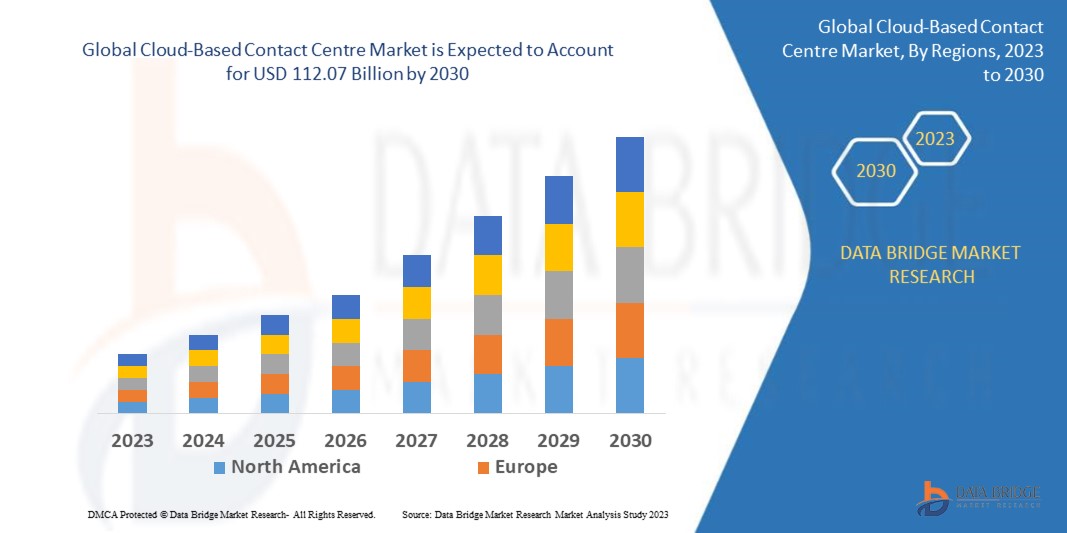Rising Above the Clouds: A Comprehensive Analysis of the Cloud-Based Contact Centre Market
Cloud-Based Contact Centre Market Trends, Growth & Forecast 2025–2030
The emergence of Cloud-Based Contact Centers is transforming how companies interact with their customers by offering greater flexibility, scalability, cost-efficiency, and integration capabilities. This transformation is giving rise to a rapidly expanding market—the Cloud-Based Contact Centre Market.
According to recent research, the global cloud-based contact center market is witnessing robust growth, driven by increasing customer service demands, remote work trends, cost optimization needs, and advancements in cloud and AI technologies. This article explores the market dynamics, growth factors, key players, regional trends, and future opportunities in the cloud-based contact center landscape.
Market Overview
A cloud-based contact center is a central point in an enterprise, hosted on internet-based cloud services, from which all inbound and outbound customer communications are handled. Unlike traditional on-premise contact centers, cloud-based models are not restricted by location or hardware and can be quickly scaled up or down based on business needs.
The market size was valued at USD 17.1 billion in 2023 and is projected to reach USD 60.3 billion by 2030, growing at a CAGR of 19.5% during the forecast period. This growth trajectory is supported by the increasing adoption of omnichannel communication, AI-driven analytics, and remote workforce management.
Key Market Drivers
1. Demand for Enhanced Customer Experience
Modern consumers expect quick, seamless, and personalized interactions across multiple channels such as voice, email, chat, and social media. Cloud-based contact centers enable businesses to deliver such experiences by integrating CRM, AI, and analytics tools.
2. Rise in Remote and Hybrid Work Models
The COVID-19 pandemic accelerated the need for flexible work environments. Cloud-based contact centers support distributed workforces with remote access, virtual desktops, and secure connectivity, driving widespread adoption.
3. Cost Efficiency and Operational Flexibility
Traditional contact centers require significant capital expenditure on hardware and maintenance. In contrast, cloud models operate on a subscription basis, reducing upfront costs and enabling scalability on demand.
4. AI and Automation Integration
Artificial Intelligence (AI) and machine learning are redefining contact center operations. Cloud platforms seamlessly integrate AI tools like chatbots, predictive routing, and sentiment analysis, enhancing productivity and customer satisfaction.
5. Regulatory Compliance and Data Security
Cloud providers are investing heavily in compliance and security frameworks such as GDPR, HIPAA, and PCI-DSS, which assure businesses of safe customer data handling, further boosting trust in cloud-based systems.
Market Segmentation
By Component
-
Solutions: Call routing and queuing, reporting & analytics, workforce optimization, customer collaboration, etc.
-
Services: Professional services, managed services, training, and support.
By Deployment Mode
-
Public Cloud
-
Private Cloud
-
Hybrid Cloud
By Organization Size
-
Small and Medium Enterprises (SMEs)
-
Large Enterprises
By Industry Vertical
-
BFSI
-
Healthcare
-
Retail & E-commerce
-
IT & Telecom
-
Government
-
Travel & Hospitality
-
Others
Regional Insights
North America
Leading the market, North America accounts for the largest revenue share due to strong technological infrastructure, high adoption of AI and cloud technologies, and a focus on customer-centric business models.
Europe
Growth in the European market is fueled by stringent data privacy regulations like GDPR and increased digitization in banking and healthcare sectors.
Asia-Pacific
APAC is the fastest-growing region, driven by rising internet penetration, the proliferation of mobile devices, and increasing demand for customer service in India, China, and Southeast Asia.
Latin America, Middle East & Africa
These emerging markets are witnessing growing investments in IT infrastructure and cloud adoption, especially in banking, retail, and government services.
Key Players and Competitive Landscape
The cloud-based contact center market is moderately fragmented, with key players investing in product innovation, strategic partnerships, and mergers & acquisitions to gain competitive advantage. Notable companies include:
-
Genesys
-
Five9
-
NICE Ltd.
-
Cisco Systems
-
Avaya
-
Amazon Web Services (AWS)
-
8×8 Inc.
-
Talkdesk
-
RingCentral
-
Microsoft Corporation
These players offer end-to-end cloud contact center solutions with embedded AI, analytics, and omnichannel support capabilities.
Trends and Innovations
1. Omnichannel Engagement
Businesses are moving towards a unified customer experience across all digital and voice channels, facilitated by integrated cloud platforms.
2. Conversational AI and Chatbots
AI-powered bots handle routine queries, reducing agent workload and enabling 24/7 customer service.
3. Workforce Engagement Management (WEM)
Cloud solutions now incorporate tools for workforce optimization, performance monitoring, and e-learning, enhancing employee satisfaction and efficiency.
4. Self-Service Portals
Modern contact centers empower customers with knowledge bases, automated FAQs, and virtual assistants for faster resolution without agent intervention.
5. Real-Time Analytics and Sentiment Analysis
Analytics tools provide real-time insights into customer behavior and agent performance, driving informed decision-making.
Challenges
Despite its many benefits, the cloud-based contact center market faces several challenges:
-
Data privacy concerns in highly regulated industries
-
Integration complexities with legacy systems
-
High initial migration costs for large enterprises
-
Vendor lock-in and long-term contractual constraints
Overcoming these barriers requires clear migration strategies, robust cybersecurity frameworks, and choosing flexible, scalable solutions.
Future Outlook
The future of cloud-based contact centers lies in hyper-personalization, predictive engagement, and seamless automation. As AI, 5G, and edge computing become more prevalent, the responsiveness, speed, and capability of cloud contact centers will increase dramatically.
By 2030, we can expect:
-
Widespread use of Generative AI for script suggestions and real-time agent support
-
Integration of AR/VR in customer support, particularly in tech support and healthcare
-
Full cloud-native CRM ecosystems
-
A shift from reactive to proactive customer service
Get More Details:
https://www.databridgemarketresearch.com/reports/global-cloud-based-contact-center-market
Conclusion
The cloud-based contact center market is undergoing a significant transformation, reshaping the customer service landscape across industries. With its agility, scalability, and cost-efficiency, cloud contact centers empower organizations to meet evolving customer expectations while optimizing operations. Businesses that embrace this technology not only gain a competitive edge but also future-proof their customer engagement strategies in an increasingly digital world.





